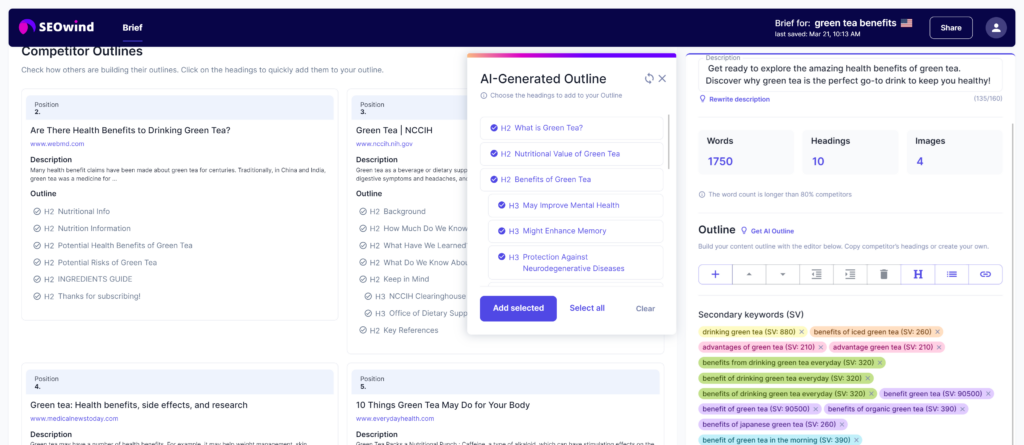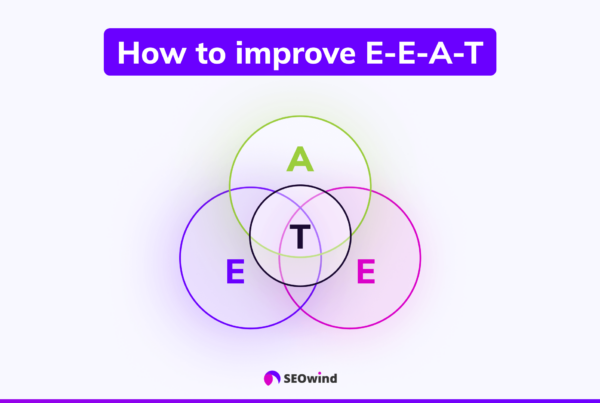Are you interested in learning how to write a blog but need help figuring out where to start? With the rise of digital communication, blogging has become essential for sharing ideas, boosting your online presence, and even making money.
This guide will help take you from a novice writer to an expert blogger with step by step guide unveiling the best practices for creating engaging content that resonates with your audience. Learn how to brainstorm topics, write eye-catching headlines, select appropriate visuals, leverage SEO strategies, and more. It’s time to unleash your creativity and tell your story like never before.
What is a Blog?

A blog (short for “weblog”) is an online platform where individuals or businesses can share information or their thoughts on specific subjects chronologically. Blogs consist of individual articles known as blog posts that provide valuable content that informs, entertains, or educates readers. Typically updated frequently, posting relevant articles keeps readers engaged and returning for more.
With blogs covering almost every topic imaginable—from travel tips to personal finance advice—there are countless niches available for newcomers to explore. The benefits derived majorly depend on one’s goals: Some people use blogs as personal diaries, while others capitalize on them as vehicles for generating passive income through monetization.
Understanding the art of crafting engaging blog posts is critical regardless of your objectives. This comprehensive guide will teach you everything about using persuasive writing techniques and strategic promotion strategies that align perfectly with achieving outstanding blogging success.
Benefits of Writing a Blog

Writing a blog offers numerous advantages for individuals, businesses, and organizations. A well-maintained blog can be essential for communication, marketing, and self-expression. This section will explore some of the significant benefits of writing a blog.
Enhance Your Skills and Knowledge
One immediate benefit of writing a blog is the opportunity to improve your writing and research abilities. As you regularly create content for your blog, you’ll learn how to articulate your thoughts more effectively and organize information cohesively. Additionally, diving deep into various topics helps enhance your knowledge in specific areas, positioning yourself as an expert.
Create Networking Opportunities
A blog is an excellent platform to connect with like-minded individuals who share similar interests or professionals in your industry. By writing insightful content on relevant subjects, you can establish yourself as an authority in your field. Consequently, networking possibilities open up through guest blogging opportunities, online forums engagement, or attending conferences.
Generate Income Potential
Many bloggers have found ways to monetize their platforms by advertising products or services related to their niche markets. If you’re wondering how to become a blogger and make money, knowing how to write engaging posts attracts a loyal readership translating into increased traffic for potential advertisers or sponsored giveaways.
Boost Personal Branding and Professional Opportunities
Successful blogs function as personal branding tools – showcasing one’s skills and expertise before prospective employers or clients. A well-written blog may set you apart from competitors in job hunts or freelance work proposals since it shows dedication toward continual professional development.
Express Yourself Creatively
Lastly, maintaining a blog allows space for creative expression – sharing ideas about personal experiences or pursuing hobbies without any specific commercial goals: purely seeking connection with others sharing similar passions! Whether through visual storytelling (image-based posts) or crafting long-form articles telling your tale, blogging provides a valuable avenue for creative exploration.
Types of Blog Posts
There is an array of blog post formats that you can incorporate into your content marketing strategy. Choosing the right blog post type for your specific goals and audience will make all the difference in reader engagement, conversions, and, ultimately, success. This section will explore various types of popular blog posts catering to different purposes and audiences.
How-To Posts
How-to posts are one of the most popular types of articles in the blogging world, as they provide readers with actionable tips and step-by-step guidance on how to accomplish a specific task or solve a problem. They typically start by identifying a problem or challenge the target audience faces before diving into practical advice on how to address it. To write a helpful “how to post”, focus on the following:
- Identifying your target audience’s pain points
- Defining clear objectives for readers
- Providing detailed steps backed by research and expertise
List Posts
List-style posts, also known as listicles, are popular due to their easily digestible format and engaging nature. They break down information into numbered or bulleted lists, which are quick to read and easy to understand. To write an impactful list post:
- Choose a topic relevant to your niche
- Ensure each item on the list has substance and value
- Keep it concise but informative
News Articles
News articles keep readers up-to-date with current events related to your industry or area of expertise. These posts cover new product releases, company announcements, emerging trends, or any other noteworthy information affecting your community or business sector. Tips for writing news articles include:
- Staying abreast of recent developments in your field
- Presenting balanced reporting
- Discuss facts from reliable sources
Interviews
Interviews can offer valuable insight from experts in a field or people with unique experiences relevant to your blog’s niche. Conducting interviews and sharing them on your blog allows you to present fresh perspectives, add credibility to your content, and engage readers interested in learning from others. When incorporating interview-style posts:
- Choose noteworthy individuals or experts in your industry
- Prepare well-researched questions
- Format the interview for readability
Reviews
Review posts critically evaluate products or services related to your blog niche, offering insight based on personal experience, hands-on testing, or customer feedback. These posts help guide readers’ purchasing decisions by sharing pros, cons, features, and overall satisfaction with the product or service. To craft a compelling review post:
- Be transparent about any potential biases
- Provide thorough evaluations of all aspects of the item being reviewed
- Discuss both positive and negative aspects
Personal Stories
Personal stories give readers an inside look into the blogger’s life, allowing them to relate more closely with you as an individual while also humanizing your content at large. Telling personal anecdotes helps build a stronger connection between you and your audience by providing insight into everyday struggles and life lessons they might be facing themselves.
- Share authentic experiences that resonate with your target reader group
- Offer valuable takeaways from each story shared
- Maintain reader interest by crafting engaging narrative arcs
Explainer Posts
Explainer posts delve into complex subjects or concepts within a particular industry or field. They aim to simplify these topics for easy comprehension among non-specialist audiences.
Step 1: How to Start a Blog

Understand your audience
Before diving into the process of starting a blog, it’s essential to have a clear understanding of who your target audience is. Consider their interests, needs, and preferences when determining the tone and content of your blog. You can conduct market research, create buyer personas, or use social media platforms to gain insights into their preferences.
Check out your competition
Exploring the other blogs within your niche is crucial to understanding what resonates well with readers and identifying gaps you could fill. Examine their writing styles, formatting choices, and topics they cover. Learn from the successes and failures of others as you prepare for how to write a blog.
Determine what topics you’ll cover
Generating engaging content will require brainstorming ideas relevant to your niche industry or passion project. Keep track of these concepts for future reference. Use them as inspiration when developing a great blog post.
- List your passions or expertise
- Identify pain points or problems faced by your target audience
- Research keywords and phrases related to your topic
- Think about trending topics within your field
Identify your unique angle
With numerous blogs on various subjects available online, finding an aspect that sets yours apart is essential in attracting readership. You can base your distinctive approach on personal experience or a distinct perspective formed from research. Either way, offering valuable information not readily found on other blogs or elsewhere will keep readers engaged and enhance visibility.
Name your blog
Selecting a name for your blog sets the stage for its branding efforts while encapsulating its purpose at first glance. Try creating thoughtful combinations of words related to the main topics you’ll discuss or choosing something catchy yet descriptive enough that potential visitors can quickly discern what they’d find there.
Create your blog domain
Once you’ve settled on a name for your blog’s domain, the next step is to purchase a domain. A custom domain increases professionalism and makes your blog easier to find among competitors. Websites such as GoDaddy, Namecheap, or Google Domains are popular choices for purchasing domains.
Choose a CMS and set up your blog
A Content Management System (CMS) simplifies the process of publishing and updating content on your site. WordPress, Blogger, and Squarespace are popular CMS options that cater to varying needs based on technical knowledge, design flexibility, or blogging-specific features. Once you choose a platform that suits your needs, sign up for an account, and follow their instructions to link your new domain to the platform.
Customize the look of your blog
With the foundation in place, you can now focus on designing your blog’s appearance with various templates available within most CMS platforms or seek third-party designs if desired. Ensure its layout is user-friendly and aesthetically appealing; tweaking typography color schemes aligns with branding efforts while ensuring optimum readability.
Write your first good blog post
The moment of learning how to write a blog begins: composing your first post! Consider kicking off with a compelling introduction followed by an informative piece relevant to the target audience’s core subject matter.
Step 2: Choose a Topic for Your Blog Post

Selecting the right topic is crucial in learning how to write a blog post that captures the attention of your target audience. The success of your first blog post could rely on this decision, so it’s essential to invest time and effort in choosing a fitting subject.
Brainstorm Blog Post Ideas
- Identify your passion and expertise: Reflect on subjects you’re enthusiastic about and possess strong knowledge or skills. Writing about topics you’re passionate about makes it easier to engage with readers.
- Consider your audience’s needs: Consider what information would be valuable or interesting to your target audience while aligning with your blog’s theme.
- Evaluate trends: Keep an eye on industry news, social media discussions, and the content published by other prominent bloggers in your niche. This will help you understand which topics are trending and may pique readers’ interest.
- Address frequently asked questions: Take note of common questions relevant to your niche that people often ask online forums or social media channels, as these can inspire your next great blog post.
- Draw from personal experiences: Share lessons learned from personal experiences or challenges you’ve faced, offering relatable stories to provide value and insight.
Remember always to focus on providing unique value; if several resources cover the same topic extensively, consider adding new perspectives or updating outdated information.
Research Your Topic
Once you have narrowed down potential topics for your next blog post, conduct thorough research before you start writing:
- Verify facts: Ensure to back up the facts or statistics in your article with reputable sources like research papers, government websites, or renowned experts in the field.
- Note popular opinions and contrasting viewpoints: Determine debated areas surrounding the topic; addressing these different opinions can create richer content that appeals to diverse audiences.
- Seek primary sources whenever possible: Relying on first-hand accounts, interviews, or direct access to credible* data sources will enhance your blog’s authority and credibility.
- Analyze previous publications covering a similar topic: Investigate how well these articles performed regarding reader engagement (comments, shares, etc.), as this can help you gauge which aspects of the subject matter are most popular among readers.
Conduct keyword research
Conducting keyword research and analysis for blog posts is a crucial element in the process of writing powerful and search-engine-optimized content that resonates with your target audience. By identifying and utilizing specific keywords or phrases, you can significantly increase the visibility of your work on search engines, leading to higher traffic and engagement. The objective of keyword research is to determine the most relevant search terms that align with your blog’s theme, making your posts more discoverable to the users searching for that particular topic.
???? More Resources on Keyword Research:
1. The ABCs of SERP Keywords
2. How to do SEO Keyword Research
3. Discover the Best Keyword Research Tools of 2023
4. How to Do Keyword Research in minutes – Practical Tips
Combining blog post ideas with thorough research is essential when learning how to write a blog post that connects with your audience and showcases your expertise.
Step 3: Create an Outline for Your Blog Post
Creating a content outline before diving into the actual writing process is crucial when learning how to write a blog. Not only does it help organize your thoughts, but it also ensures a clear structure and flow that keeps readers engaged.
The Importance of Outlines
- Provides organization: An outline simplifies complex ideas by categorizing them into sections, allowing you to avoid scattered thoughts or repetitive content.
- Enhances readability: With a planned structure, your blog post becomes easier to navigate, enabling readers to follow along without getting lost.
- Saves time: Committing to an outline from the beginning prevents wasted effort on unnecessary revisions or rewrites later on.
Steps for Creating an Effective Outline
- Brainstorm the key points: Consider your chosen topic and think about all the essential points that need covering within your blog post. Note down these key ideas as they will form the foundation of your outline.
- Organize ideas logically: Arrange the points logically, keeping in mind both chronology and priority – information should flow while ensuring important aspects take precedence over less urgent details.
- Divide content into sections: Break down those organized key points into distinct sections with accompanying subheadings (e.g., what is covered under “Introduction,” “Body,” and “Conclusion”). This forms the skeleton of your blog post structure and clarifies any potential gaps that need filling.
- Choose transition phrases: To maintain seamless connections between sections, incorporate appropriate transitional words like “Additionally” or “On the other hand.” This technique enhances readability by linking related ideas instead of relying solely on conjunctions.
- Adjust as necessary: During the writing process, you may need to make some adjustments – new subsections might emerge, or others might need refinement for brevity’s sake. Therefore, remain flexible throughout this phase.
Take advantage of creating outlines when discovering how to write a blog post, as it will pave the way for efficiency and effectiveness. Outlines foster an organized thought process and ensure readers are drawn into a clear, structured narrative that keeps them engaged from start to finish. With these tips in mind, you’ll be well on your way to crafting standout blog content.
???? More Resources on Content Outline:
1. Content Outline for Article – Practical How-To Guide for SEO Success
2. How to Write a Blog Post Outline [Steps, Tips and Templates]
3. The Best SEO and AI Outline Generators, For You
Write content outlines at scale with SEOwind
Research takes time. With SEOwind you can speed it up, not sacrificing quality. You can create a blog post outline with just one click. Our AI prioritizes research, SEO, and SERP data to create the most comprehensive outline for the particular keyword.

It also gives the possibility to add headings. Swiftly scan through top SERP results and cherry-pick relevant headings and questions to enhance your outline.
Step 4: Write the Blog Post Headline
The headline is one of the most critical aspects of your blog post. It is often the first thing potential readers see when they come across your content, and it plays a significant role in determining whether or not they will engage with your article. Investing time and effort into crafting an attention-grabbing headline can significantly increase your chances of capturing the reader’s interest.
This section will discuss essential tips and techniques for writing headlines that appeal to readers and Google.
Keep it Clear and Concise
Aim to create headlines that communicate what the blog post is about without using too many words. As a rule of thumb, limit your headline length to approximately 60 characters, as this is typically the maximum number displayed in search results. Additionally, prioritizing clarity attracts users searching for specific topics.
Use Powerful Words and Phrases
Incorporate strong words (such as “discover,” “unleash,” and “master”) or emotionally-charged phrases (like “eye-opening,” “game-changing,” and “must-read”) to help convey the value of your content and entice user engagement. However, be cautious not to overuse these phrases or rely on clickbait tactics – an overstated headline may disappoint audiences with high expectations upon reading the body of the post.
Focus on Keyword Optimization
When considering how to write a blog headline with SEO in mind, remember that strategically including relevant keywords within your title can improve search engine results and visibility. Aim to utilize primary keywords at least once in your headline while maintaining readability and coherence.
Here are some examples:
- Bad: The Best Tips Ever for Making Money Online
- Good: Top 10 Proven Strategies: How to Start a Blog and Make Money
Use Numbers, Questions, or Unique Formats
Employing numerical listicles (such as “7 Reasons Why…” or “10 Ideas for…”), asking provocative questions (“Are You Making These Common Blogging Mistakes?”), or utilizing unique formats (like brackets to clarify [Infographic], {Case Study}, <Free Template>) can enhance the appeal of your headline and increase readership rates. Experiment with these elements to determine what resonates best with your target audience.
Crafting a compelling blog post headline involves a combination of creativity, clarity, and targeted keyword usage. By applying these techniques and considering your target audience’s preferences and needs, you can create headlines that draw readers in and help boost both visibility and engagement for your content.
Step 5: Write the Introduction to Blog Post
A captivating introduction is paramount to engaging your reader from the get-go. As a blogger, you should create an opening that grabs your reader’s attention and entices them to read further.
In this section, we’ll explore how to write a blog introduction that will set a strong foundation for the rest of the post.
Start With an Attention-Grabbing Hook
To begin with, craft a hook that piques your readers’ curiosity. This could be in the form of:
- A surprising fact or statistic
- An anecdote or personal story
- A bold statement or claim which contradicts common beliefs
- Quoting an influential figure who has shared their thoughts on the topic
Remember that your hook should resonate well with your target audience and tap into their interests, concerns, or desires.
Make Your Opening Lines Count
Avoid generic phrases like “In today’s world” or “In recent years.” Instead, use engaging language and powerful words to keep readers hooked. Be concise and focus on addressing any potential challenges or questions they might have about the topic at hand.
Establish Credibility
Establishing credibility early on is crucial when it comes to writing introductions. You can achieve this by:
- Demonstrating subject-matter expertise.
- Providing relevant data backed by authoritative sources.
- Highlighting personal experiences shows why you are well-suited to write about this topic.
Showing your knowledge will help gain the trust of your audience and make them more likely to rely on the information provided within your blog post.
Set Clear Expectations
After captivating readers with a compelling hook and establishing credibility, it’s time to explain what they can expect throughout the article. Briefly outline significant points you will discuss as it provides an overview of what is coming up in later sections. This also helps ensure readers know they’re in for valuable content tailored to their needs and interests.
Provide an Incentive
To further encourage your readers, mention the benefits they will gain by reading your blog post. Clearly stating how the content of your article aims to assist or inform them is crucial for retaining their attention throughout the blog.
Step 6: Writing the Body of the Blog Post
The body of your blog post is where you dive into the details and deliver valuable information to engage and educate your audience. Following a structured approach is essential, using appropriate keywords, concise paragraphs, and logical transitions between ideas. In this section, I’ll guide you through how to write an effective blog post that keeps readers engaged.
Break it Down Into Subheadings:
Divide your post into smaller sections based on key points or themes. Use subheadings to make it easier for readers to navigate the content and find relevant information quickly. This also helps organize your thoughts while writing great posts, as well as helping search engines like Google understand your content better.
Keep Paragraphs Short and Concise:
To maintain readability, keep paragraph length between 50-100 words. Longer paragraphs can appear intimidating or overwhelming to readers, leading them to lose interest. Breaking complex ideas into shorter chunks improves clarity and organization.
Incorporate Relevant Keywords:
While writing the body of a post, remember to include 3-5 appropriate keywords from the given list — such as “how do you write a good blog post” or “how to start writing a blog.” These should be added organically within the text without disrupting its flow or making it seem forced.
Use Lists and Bullet Points:
Incorporate ordered (numbered) or unordered (bulleted) lists when explaining steps in a process or listing important features/factors. This enhances readability by presenting crucial points concisely without getting lost in lengthy sentences.
- Point one
- Point two
- Point three
- Fact A
- Fact B
- Fact C
Be Conversational While Staying Professional
Maintain a conversational tone throughout your article by using simple language wherever possible. Don’t hesitate to use contractions such as “I’m” instead of “I am,” eliminating jargon or overly technical terms. However, always keep professionalism and avoid excessive colloquialisms or slang.
Use Examples and Supporting Evidence
Support your claims with concrete examples or credible sources by linking relevant articles or research papers. These references will help validate your arguments and engage readers interested in further exploration.
Moreover, speaking from personal or professional experience to provide unique insights, case studies, and practical tips can make your content more relatable and interactive.
Create Logical Transitions
To enhance the flow of information and ideas, use transitional phrases like “moreover,” “in addition,” and “alternatively” instead of just relying on conjunctions (e.g., “and,” “but”). This strengthens the coherence between sections and makes it easier for readers to follow your thought process.
Use AI Writing Tools to speed up writing your blog posts
Leveraging AI Writing Tools is a game-changing strategy to accelerate the process of writing compelling blog posts at scale. These advanced tools have the potential to radically enhance the efficiency and effectiveness of content creation by automating aspects such as research, idea generation, writing content outlines, or even the whole blog posts.
Writers can harness the capabilities of AI tools to generate rich and well-structured outlines, expand on complex topics, and identify areas to strengthen their arguments. Moreover, AI Writing Tools can also optimize your content for SEO, ensuring it reaches the desired audience and resonates with them.
This fusion of human creativity and machine intelligence paves the way for producing high-quality blog posts with minimum effort, ultimately enabling writers to stay ahead in today’s fast-paced digital landscape.
???? More Resources on Blog Post Content Length 1. AI Article Writing with ChatGPT – Cyborg Method [eBook with tested prompts] 2. How Long Does it Take to Write a Blog Post? Tips to scale 3. How Long Should Blog Posts Be? The Definitive Guide
Step 7: Add Images to Your Blog Post

Incorporating images into your blog post is an essential tactic that enhances the visual appeal, increases reader engagement, and can even help with search engine optimization. A balance between adding relevant pictures and focusing on content quality is crucial for an influential article. In this section, you’ll discover how to select, optimize and insert suitable images into your blog post.
Choose the Right Images
Selecting appropriate images for your blog post plays a vital role in capturing readers’ attention. Keep these considerations in mind when choosing visuals:
- Relevance: Ensure each image relates to the topic or complements the written content.
- Quality: High-resolution images are preferable. However, avoid huge files that may slow down page loading times.
- Copyright: Use only royalty-free or properly licensed images to prevent legal issues. You can find such images through Unsplash, Pexels, and Pixabay.
Optimize Images for SEO
Inserting well-optimized visuals can improve your site’s visibility online by boosting SEO performance. Here are some crucial practices for optimizing photos:
- File format: Save your images as JPEGs or PNGs, as they allow better compression without sacrificing much quality.
- File size: Reduce image file sizes to improve load times without compromising their appearance drastically using tools like TinyPNG or ImageOptim.
- Alt text: Insert informative and keyword-rich alt-text descriptions for every image, making them accessible for screen readers and helping search engines understand their relevance.
Incorporate Images Efficiently
Now that you’ve selected and optimized suitable photos let’s move on to embedding them effectively within your post:
- Strategically place visuals throughout the content, avoiding overcrowding sections with too many images.
- Align photographs centrally or alongside pertinent text to not distract from important information but enhance it.
- Use clear and descriptive captions for every image, providing context to the reader.
By thoughtfully selecting, optimizing, and incorporating visuals into your blog post, you’ll create a richer experience for the reader while also attracting more organic traffic through improved SEO. Ultimately, engaging images paired with high-quality content are essential for a well-rounded and successful blog post.
Step 8: Write the Conclusion
As you reach the end of your perfect blog post, crafting a conclusion summarizing and reinforcing your discussion is essential. This isn’t merely an afterthought or a box-ticking exercise. A well-written conclusion can leave a lasting impression on your readers and even prompt them to take further action. How to do it? Let’s dive in.
Keep It Brief and Concise
Aim for a concise conclusion that briefly recaps the key points from your post. Long-winded conclusions can cause fatigue, potentially undoing all the hard work you’ve put into engaging your readers. Strive for 3-6 sentences. It’s usually enough to wrap up your thoughts effectively. Conclude with any necessary calls-to-action (CTAs) before signing off, but be careful not to sound too pushy.
Connect with Your Readers
To create an emotional connection with your audience, consider ending your conclusion by relating to them directly or addressing their needs and concerns. This approach demonstrates empathy towards their situation and respect for their time reading your post – something all successful bloggers should strive for.
Provide Takeaways or Next Steps
Give readers some actionable advice and steps they can take based on what they’ve learned from reading your article. These recommendations might be:
- Trying out suggested tools or techniques.
- Researching further into the topic.
- Donating to relevant causes.
- Sharing their newfound knowledge within their social circle.
Providing valuable takeaways demonstrates that you genuinely care about helping people. It ensures they receive tangible benefits from engaging with your content.
Incorporate CTAs Wisely
Although including one or two calls-to-action (CTAs) in your conclusion can generate engagement (e.g., by prompting readers to subscribe or share), overdoing this can lead to a hard-sell approach that may put off potential subscribers and other readers.
Instead, use CTAs sparingly and let the content speak for itself. People who find it valuable will likely engage with your suggested actions.
Avoid Introducing New Information
Your conclusion should not introduce new information not covered throughout the post. The primary purpose is to summarize and reinforce the ideas you’ve already discussed. By including additional data or insights in your conclusion, you risk leaving readers feeling confused or unsatisfied.
In summary, when it comes down to writing a conclusion, focus on conciseness, connecting with your audience, providing takeaways or next steps, incorporating only relevant CTAs, and refraining from introducing new information. By adhering to these guidelines while crafting an insightful yet succinct wrap-up of your blog post’s key points, you’ll leave a memorable impression on your readers that entices them to continue exploring your content.
Step 9: Edit and Proofread Your Blog Post

One of the most crucial stages in learning how to write a perfect blog post is editing and proofreading your post. This step ensures your content is error-free, clearly articulated, and coherent. Investing time refining your writing can ultimately lead to maintaining high-quality content that builds credibility with your audience.
Review Your Content for Clarity and Consistency
Begin by reading your entire blog post, pausing periodically to evaluate if your ideas are clear and easy to follow. Ensure each section remains consistent with its relative heading and flows smoothly from one topic to another. Recognize logical transitions between paragraphs to maintain cohesiveness throughout the piece.
Check Grammar, Spelling, and Punctuation
Next up in editing is checking for grammar, spelling, and punctuation errors which can often distract readers’ attention or give off a negative impression about the quality of your blog post—thus reducing engagement levels. Use online tools like Grammarly or Hemingway Editor to assist you during this process.
Tips for Addressing Common Errors
- Correct verb tense inconsistencies.
- Replace overused adjectives with creative synonyms for variety.
- Rectify subject-verb agreement mistakes.
- Fix incorrect sentence structures or run-on sentences.
Examine Readability
When considering writing a blog post effectively, pay close attention to readability factors such as sentence length (aiming for an average of 15 words) and overall text structure—content should be digestible yet engaging, broken down into smaller sections complete with headings and subheadings, bullet points, or ordered lists. Furthermore, ensure word choices suit both beginner readers while showcasing industry expertise—a balance made possible by using plain language as much as possible.
Edit Multimedia Elements
In addition to editing the text within the blog post itself, remember to examine added multimedia elements to avoid distracting visuals or conflicting information. Check image alignment, captions, credits, and embed links, tables, and videos for correctness and coherency.
Seek Third-Party Feedback
Lastly, enlisting a reliable friend or colleague to review your blog post can bring fresh perspectives on detecting errors that may have previously gone unnoticed or provide constructive criticism regarding the structure of the content. Keep an open mind throughout this editing phase and be receptive to input; another individual’s viewpoint could lead you toward valuable improvements.
Editing and proofreading should always be treated as an essential components within any guide on how to write a blog successfully. By ensuring your content is error-free, coherent, and engaging for readers from various backgrounds, you’ll establish a reputation for high-quality writing capable of attracting loyal followers or potential monetization opportunities in the future.
Step 10: Use SEO Strategies to Reach a Wider Audience

As a blogger, one of your main goals is to reach as many people as possible with your content. To do this, you will need to optimize your blog posts for search engines like Google, which makes it easier for readers to use search queries to discover your articles. In this section, we’ll discuss some basic Search Engine Optimization strategies for writing a blog that attracts more traffic.
Importance of Keyword Research
To rank well in search engine results, it’s essential first to identify the keywords and keyword phrases related to your topic. Use keyword research tools like Google’s Keyword Planner, Ubersuggest, or SEOwind. Once you have identified the appropriate keywords:
- Use them naturally within your blog post’s headline, introduction, headings/subheadings, body text, and meta tags.
- Avoid overstuffing – stuffing excessive keywords hampers readability and may result in penalties from search engines.
Valuable Content and Readability
Search engines value high-quality content that is easy for users to read and understand. Improve the quality of your content by:
- Offering valuable insights supported by reliable sources.
- Structuring your posts clearly with heading tags (H1-H6).
- Keeping paragraphs short – aim for 50-100 words per paragraph.
- Writing in an engaging conversational tone.
Additionally, consider using tools such as Hemingway Editor or Yoast SEO plugins for WordPress that help manage readability scores.
Backlinks Play a Crucial Role
Backlinks are links pointing toward your site from other reputable web pages; they act as votes of confidence, thus significantly impacting search engine rankings.
Cultivate backlinks by:
- Creating shareable content with compelling headlines.
- Engaging within relevant online communities where sharing is encouraged.
- Establishing partnerships or collaborations with other bloggers and industry experts in your niche.
Mobile Responsiveness and Page Speed Optimization
An increasing number of users access blogs through their mobile devices, and search engines consider mobile responsiveness in their rankings. Ensure a seamless user experience by:
- Choosing responsive blog design templates.
- Compressing images for faster loading times.
- Regularly testing the site on different devices to identify and fix issues.
Additionally, pay attention to page speed optimization techniques, such as using cache plugins or minimizing server requests to boost your site’s performance.
Consistency is Crucial for Search Engine Optimization
For higher search engine visibility, maintain consistency in your blogging efforts by regularly updating content, refreshing outdated articles, and sticking to a publishing schedule.
???? More Resources on SEO & Links:
1. SEO Blogging: How to Optimize a Blog Post for SEO 2. Internal Linking: A Boost to SEO Performance 3. Essential Guide: What are Backlinks in SEO in 2023
Step 11: Publish Your Blog Post

Once you have crafted a well-researched, compelling, and engaging blog post, it’s time to take the final step: publishing. This process may seem simple at first glance. Still, several key details must be considered before hitting the publish button.
This section discusses essential aspects of scheduling content, optimizing on-page SEO elements, and ensuring proper formatting.
Schedule Your Content
When it comes to posting your content online, timing is crucial. To maximize engagement with readers and reach a wider audience, consider publishing during peak hours when your target demographic is most active on the web. Here are some general tips for scheduling blog posts:
- Determine when your audience is online by checking analytics tools.
- Aim to post during weekdays, as weekends tend to attract less traffic.
- Publish consistently (e.g., once or twice weekly) to show commitment and keep readers engaged.
Optimize On-Page SEO Elements
Before you hit publish, ensure that all on-page SEO elements are optimized efficiently so search engines can index and rank your content better. Key steps include:
- Include relevant keywords in the post title and subheadings.
- Write an enticing meta description with targeted keywords.
- Use alt tags for images to help with accessibility and SEO.
- Add internal links to other relevant blog posts or pages on your website.
Ensure Proper Formatting
To enhance readability and maintain a professional appearance, be sure to adhere to proper formatting guidelines consistently across all of your blog posts:
- Use headings and subheadings effectively: H1 for the main title, H2 for major sections, and H3 for subsections within those sections.
- Keep paragraphs short (50–100 words) and use bullet points or lists when possible.
- Use clear font styles that are easy on the eyes—avoid overly complex designs or scripts.
After incorporating these factors, take one final look at your blog post to review it from the reader’s perspective and then confidently hit “publish” button. Congratulations—you’ve just added another valuable piece of content to your blog, showcasing your expertise and attracting potential readers! Keep experimenting with different topics and styles to evolve as a blogger and provide fresh insights that resonate with your audience.
Step 12: Promote Your Post on Social Media Platforms

After successfully writing and publishing a blog post, the next crucial step is promoting it to reach your target audience. Social media platforms like Facebook, Twitter, Instagram, LinkedIn, Pinterest, and even YouTube have become powerful marketing tools for bloggers. These channels help drive traffic to your website and increase engagement with your content. In this section, let’s explore how you can use different social media platforms to amplify the visibility of your blog posts.
Facebook is still one of the most popular platforms billions of users use worldwide. To leverage its potential:
- Create a Facebook page for your blog that represents your brand.
- Share links to your posts along with eye-catching images and engaging captions.
- Participate in various groups related to your niche and share valuable insights and a link to your relevant blog posts.
Twitter’s fast-paced nature makes it an ideal platform for sharing snippets from your blog post:
- Craft engaging tweets that include quotes or critical points from the post and a link to the full article.
- Utilize relevant hashtags (#) that are popular among your target audience.
- Engage with other users who share similar interests by replying, retweeting, or liking their Tweets about related topics.
While Instagram mainly serves visual-driven content creators, bloggers can harness its power through targeted strategies:
- Use high-quality images or create catchy graphics with text overlays containing summaries or quotes from your post.
- Add a “swipe-up” Call-to-Action (CTA) link in Stories which directs followers straight to your blog post (available for accounts with more than 10K followers).
- Optimize content using niche-related hashtags and regularly engage within these communities.
LinkedIn provides professionals an opportunity to network and showcase industry expertise through quality content:
- Share your blog post link with a thought-provoking question, quote, or teaser to generate discussions.
- Connect and engage with influential people or companies within your niche.
- Join relevant LinkedIn groups where you can share valuable insights alongside your blog posts.
Pinterest acts as a search engine for visual content, which makes it perfect for sharing instructional guides or visually appealing articles:
- Create attractive custom-made pins using free design tools like Canva.
- Organize pins into themed boards to categorize your content effectively.
- Utilize strategic keywords in pin descriptions to help users find your content more easily.
Remember that each social media platform requires an individual approach tailored to its specific audience and features. Continuously analyze the performance of your promotion efforts, make data-driven decisions, and fine-tune strategies accordingly.
Step 13: Measure Success Through Analytics and Tracking Results

As a content writer, it’s essential to measure the success of your blog posts. By using analytics and tracking results, you can understand how well your content resonates with your audience, identify opportunities for improvement, and ultimately achieve your blogging goals. In this section, we’ll explore some practical techniques for measuring the success of your blog posts using relevant keywords like “how to write an awesome blog post” and “blog content writing.”
Choose the Right Metrics
To accurately gauge the effectiveness of each post in your article on blogging, it’s crucial to select metrics that align with your objectives. Some common key performance indicators (KPIs) you might consider include:
- Pageviews: The number of times people have viewed your blog post.
- Unique visitors: The number of individual users who visit your post.
- Average time on page: How much time readers spend on average reading the article.
- Bounce rate: The percentage of users who leave quickly without exploring further.
- Social shares: Shares or likes across social media platforms like Facebook, Twitter, or LinkedIn.
- Comments and engagement: A count of comments or interactions from readers.
By focusing on these core KPIs, you can gain insight into how effectively you can engage readers with your blog content writing.
Utilize Analytical Tools
Numerous analytical tools can streamline tracking results for even those wondering, “how do I write a blog?” Google Analytics is one popular option—it offers an extensive range of features, including data visualization and custom reports for monitoring various KPIs mentioned earlier.
With an analytical tool, you can access invaluable information, such as top-performing articles based on specific target keywords like “how to write a blog.” This data will inform future decisions regarding content creation and enable a more strategic approach.
Adjust Your Content Strategy
Once you’ve gathered sufficient data through your selected analytical tool, it’s time to analyze the information and make necessary adjustments to your content strategy. Evaluating data like bounce rate or average time on page can indicate whether readers find your posts engaging and helpful—or if there’s room for improvement.
You can also use the “how to write a blog post” keyword to examine how well those articles perform compared to other content. By understanding what works for your audience, you get vital insights for refining future blog posts and enhancing their chances of success.
Set Goals and Monitor Progress
Any effective measurement strategy should include setting specific, measurable goals for what you want to achieve with your blog content writing. Some examples of reasonable objectives might be increasing unique visitors by 10% over three months or boosting social shares by 20%.
Regularly monitoring progress is essential in identifying trends, recognizing patterns, and tweaking your approach when necessary. Monthly reviews help ensure ongoing growth and development for topics related to “how to write a blog.”
In conclusion, measuring success is integral when learning how to write a blog that captivates readers. Adopting the right metrics, utilizing analytical tools, adjusting content strategies based on findings, and setting achievable goals will lead you toward blogging success.
Step 14: Engage With Readers Through Comments and Replies
One of the critical aspects of being a successful blogger is proactively engaging with your readers through comments and replies. This not only fosters an environment of open communication but also helps you build a loyal following, connections, and opportunities for collaboration.
The Importance of Reader Engagement
Building strong relationships with your audience is essential if you want them to keep returning to read more articles on your blog. Responding to their comments sets the foundation for these relationships, showing that you value their opinion, appreciate their time reading your content, and are genuinely interested in interacting with them. Consequently, readers who feel acknowledged and appreciated are likelier to promote and share your content within their networks.
How to Effectively Respond to Blog Comments
When it comes to engaging with readers through comments and replies, consider the following strategies:
- Acknowledge each comment: Try to respond promptly whenever someone leaves a comment on your blog post. This shows that you care about their feedback and opinions.
- Offer thoughtful responses: When replying to a reader’s comment or question, offer valuable insights or solutions based on the topic discussed in your article. Avoid generic answers that don’t address the specific concerns raised by the commenter.
- Encourage further discussion: Pose questions or prompt new angles of discussion when responding to comments. This can spark additional conversation among different readers, increasing engagement levels within your community.
- Show gratitude: Thank people for engaging with your content – even if they express criticism or differing perspectives. A positive approach encourages openness and can lead to valuable learning experiences for bloggers and readers.
- Set up notifications: Ensure you enable email notifications from your blogging platform so that whenever there’s a new comment on any of your posts, you can reply quickly without missing out on any potential interactions.
Managing Inappropriate Commenters
While most engaged readers will offer valuable insights or questions, you might face inappropriate or spammy comments from time to time. To maintain a positive and constructive atmosphere for your online community, take the necessary measures:
- Set up comment moderation: Enable automatic comment filtering within your content management system (CMS) as a preventative step against unwanted comments and spam.
- Develop a clear commenting policy: Outline rules for appropriate behavior within your blog’s comment section—then display these guidelines prominently on your site so prospective commenters are aware of the expectations.
- Address legitimate criticism gracefully: Not all negative comments are unconstructive; some might pose valid points that deserve acknowledgment or open discussion.
- Delete offensive or disruptive comments: If a specific remark serves no purpose other than insulting, defaming, or causing confusion among readers, feel free to remove it in the best interests of maintaining a healthy community environment.
Remember, engaging with readers through comments and replies is crucial to build trust, loyalty, and long-term success in blogging. Be proactive in addressing their feedback and promoting meaningful connections on your platform.
Step 15: Monetize Your Blog Posts

Once you’ve mastered creating engaging blog content, it’s time to turn your attention toward monetization. By employing various strategies, you can generate income and maximize the potential of your blog. Here are the most effective methods for monetizing your blog posts.
Advertising
Featuring advertisements on your blog page is a straightforward way to start generating revenue. Some popular ad platforms include Google AdSense, Media.net, and Infolinks. These platforms provide relevant ads based on the content and audience demographics to display on your website.
Sponsored Posts
Collaborating with businesses in creating sponsored posts allows you to receive compensation by promoting their products or services within your content. Ensure these collaborations fit naturally within your niche and maintain transparency with your readers by clearly identifying sponsored posts.
Affiliate Marketing
Incorporating affiliate links within your blog posts enables an additional avenue for financial gain: affiliate marketing programs like Amazon Associates, ShareASale, Commission Junction (CJ), and ClickBank offer you a percentage of each sale made through referral links embedded in your content.
Selling Digital Products or Services
Creating digital products such as ebooks, online courses, webinars, and consulting services related to your area of expertise adds value for readers while providing another income stream. Promote these products organically throughout related blog posts to remain relevant to the topic at hand.
Creating Exclusive Content
Offering premium content exclusively for paid subscribers may be beneficial if you possess specialized knowledge or skills within a particular niche. Appealing to dedicated readers who desire more profound insights from experts like yourself can result in a reliable source of recurring subscription-based income.
Implementing these strategies will assist in securing multiple sources of revenue from various angles stemming from both passive advertisements and active participation. When considering how to write a well-monetized blog post, remember that maintaining high-quality content while integrating money-making opportunities remains paramount. Avoid compromising your blog’s authenticity, value, and readership by forcing monetization strategies in content where they do not natively belong. Your audience should remain the main priority, as their loyalty is the foundation of a successful and lucrative blogging endeavor.
Tips for Writing a Great Blog Post

In the blogging world, captivating your audience and maintaining their attention is crucial to creating an engaging piece. As you learn how to write a blog post that stands out, remember these helpful tips to help elevate your content.
Keep it Conversational
A conversational tone is one of the best ways to engage readers. Remember that readers will likely find overly formal language dull and challenging to connect with when learning how to write for a blog. Instead, aim for an approachable writing style that feels like having a chat with a friend or colleague:
- Write as if you’re speaking directly to one person; use singular first-person pronouns (e.g., “I”) instead of plural (“we”).
- Use contractions (e.g., “don’t” instead of “do not”), which make your writing sound more relaxed and friendly.
- Ask rhetorical questions to provoke thoughts and curiosity.
- Vary sentence length; mix shorter and longer ones for diversity while keeping them under 15 words per sentence.
By adopting this conversational tone in your writing, you’ll be on the right track toward developing an engaging and enjoyable reading experience for your audience.
Research Trending Keywords
Another essential step when learning how to write a blog post is ensuring visibility on search engine results pages. To do this effectively, familiarize yourself with trending keywords relevant to the subject matter at hand:
- Utilize keyword research tools like Google Keyword Planner or Ubersuggest.
- Search social media platforms such as Twitter and Instagram for popular hashtags related to your topic.
- Analyze your competitors’ keywords and see if you can incorporate similar terms into your content.
Once you’ve compiled a list of relevant keywords, try incorporating them naturally into various sections of your article, like headings, subheadings, meta descriptions, image captions, and body content. This will improve your blog post’s search engine optimization (SEO) and increase the likelihood of driving organic traffic to your site.
Cut Down Walls of Text
A blog post filled with endless blocks of text can be visually overwhelming and off-putting for readers. To create a balance, aim for paragraphs between 50 – 100 words in length and apply the following guidelines:
- Include subheadings to break up sections and give your reader an overview of what to expect from each part.
- Use bullet points or ordered lists when appropriate to present information more succinctly.
- Add relevant images or media elements like videos, infographics, or gifs – they make your article more attractive and provide visual breaks throughout the text.
By keeping these tips in mind while learning how to write a blog post, you’ll craft content that is captivating, engaging, and accessible for all readers. As your skills as a content writer continue to grow, your prowess in crafting exceptional blog posts will become second nature.
Maintain Quality Content in Your Blog Posts
As a blogger, one of the essential aspects of keeping your readers engaged and coming back is maintaining quality content. High-quality blog posts are informative, engaging, well-organized, and well-researched. To continuously create top-notch content on your blog, consider following these valuable guidelines.
Establish Consistency
To maintain the quality of your blog, stick to a consistent posting schedule. Determining how often you want to post – daily or weekly – can help you optimize effort and reader satisfaction.
Apart from maintaining consistency in frequency, try to establish uniformity in the tone and voice throughout your blog posts. This would make sure that regardless if it’s a “how-to” post or an interview article, the reader still knows they’re visiting your blog.
Stay Updated with Trends
Regularly researching and staying informed about the latest trends within your niche will help you create relevant content and respond promptly when new information emerges. This process includes:
- Keeping an eye on popular blogs within your niche
- Participating in online forums or social media groups related to your topic
- Subscribing to newsletters from industry experts
- Attending webinars, conferences, or workshops
Focus on In-Depth Research and Facts
When writing about any topic, invest time conducting thorough research from reputable sources such as academic journals, news articles by credited authors or publications, government websites, and expert reports. This helps substantiate the information presented while lending credibility to readers seeking accurate insights.
When quoting statistics or facts from other sources, always ensure proper citation while avoiding plagiarism.
Pay Attention to Formatting
Structuring your content makes it more accessible for readers by breaking down information into digestible pieces with headings/subheadings using bullet points or ordered lists where necessary – making it easier for them to skim or scan your content.
Edit and Revise Regularly
Even the most seasoned writers can make mistakes. Proofreading, editing, and revising are important processes that ensure your blog posts maintain their quality. Consider using editing tools like Grammarly or Hemingway Editor to identify your writing’s spelling, grammatical errors, or readability issues.
Additionally, set aside time each month – or quarter – where you revisit old posts; revise any outdated information while optimizing text with the latest SEO practices.
Engage with Your Audience
Evaluating feedback from your readers might present a unique opportunity to refine your blog’s content. Be open to suggestions – criticisms included – and address them if necessary.
Adhering to these guidelines when creating blog posts increases the likelihood of retaining loyal readers through consistent, high-quality content — but it also paves the way towards authoritative recognition within the chosen niche!
Guest Blogging Opportunities

Explore guest blogging opportunities at some point in your blogging journey. They increase your reach beyond your own site, build relationships with fellow bloggers and influencers, and gain credibility within the online community. To help guide you through navigating this aspect of the blogosphere, I’ve compiled some tips on how to get started with guest blogging.
Why Consider Guest Blogging
Guest blogging offers myriad benefits for both the host and the guest blogger. Some of these include:
- Gaining exposure to a new audience
- Building valuable backlinks for search engine optimization (SEO) purposes
- Positioning yourself as an industry expert
- Networking with other bloggers and creating long-lasting professional relationships
- Attracting more traffic to your blog
Finding Guest Blogging Opportunities
Now that you understand the advantages of guest blogging, here are a few methods on how to find promising opportunities:
- Begin within your niche – Search for blogs or websites related to your topics of interest by conducting keyword research based on phrases such as “how to write a blog” or “article on blogging.” You can also use Google’s advanced search operators to find sites accepting guest posts. For example: “[your topic] + intitle:‘write for us’.”
- Use social media platforms – LinkedIn, Twitter, and Facebook Groups all have thriving communities where content creators connect, collaborate and share information about guest posting opportunities.
- Join relevant networks – Sites like MyBlogGuest and BloggerLinkUp serve as central hubs where bloggers collaborate, post projects needing writers, or offer their services for guest writing.
- Leverage existing connections – Be bold and approach fellow bloggers in your network who may appreciate receiving fresh content from a trusted source.
When searching for such prospects, they must align with your target audience and goals.
Crafting a Winning Pitch
Before reaching out to potential hosts, prepare a professional and persuasive pitch that effectively showcases your ideas, experience, and the benefit their readers will derive from your post. Keep in mind the following tips:
- Perform background research on the target blog to understand its audience, topics covered, tone of voice, and guest post requirements.
- Personalize each pitch with an introduction addressing the editor or blogger by name.
- Offer a summary of who you are and your areas of expertise.
- Present 2 to 3 topic suggestions for your guest post, along with concise outlines showcasing the unique value they bring to their audience.
- Highlight relevant samples of your previous work or published articles demonstrating the quality of your content writing.
Once you’ve secured a few guest blogging opportunities, maximize them by producing high-quality content that delights readers while maintaining solid relationships with fellow bloggers. Remember always to respect each other’s editorial guidelines and protect both parties’ reputations by refraining from spammy practices, which might reflect poorly on everyone involved. With perseverance, this strategy can become an invaluable part of your blogging journey in further enhancing credibility and fostering meaningful connections in the space.
Networking with Other Bloggers
In blogging, creating connections and forming relationships with fellow bloggers is crucial. Networking can lead to valuable opportunities such as guest posts, engaging content exchanges, and increased visibility across social media channels. Here are a few strategies to establish fruitful relationships between you and other bloggers.
Engage with Their Content
One way to kickstart your networking efforts is by actively involving yourself in the blogs of others. Reading their articles, leaving meaningful comments or questions in the comment sections, and sharing their work on your social media profiles will catch their attention. Remember that engagement should be genuine and insightful; avoid generic responses or spam-like comments.
Attend Conferences and Events
Blogger conferences and industry events provide an excellent opportunity for face-to-face interactions, allowing you to connect with like-minded individuals passionate about blogging. These events usually host panel discussions, workshops, and networking sessions where you can exchange ideas, learn new techniques, or bond over shared interests within your niche.
Join Online Communities
Online communities such as forums or Facebook groups built around shared blogging topics are a great way to network virtually. Actively participating in these digital spaces offers insight into current topics within your niche while forming potentially long-lasting professional relationships. Be sure to promote your own blog, and contribute meaningfully by offering advice or adding value during online discussions.
Guest Blogging Opportunities
Sharing your expertise through guest posts helps extend your content’s reach and builds solid connections with other bloggers in your field. Approach relevant blogs that align with your topic of choice or tap into existing networks where guest blogging opportunities are posted regularly. When reaching out to potential hosts, present specific article ideas tailored for their audience rather than sending generic requests.
Collaborate on Projects
Partnering with fellow bloggers for collaborative projects is beneficial from creative and promotional perspectives—think podcasts, webinars, or co-written articles. Collaborations allow you to combine your expertise and audience reach while solidifying relationships with other bloggers who can provide valuable input for future projects.
Networking with other bloggers is crucial in the ever-growing world of blogging. Engaging with their content, attending events, joining online communities, guest blogging, and collaborating on projects are vital strategies to foster these professional connections. Successfully networking with others expands your blog’s reach and leads to personal growth as a knowledgeable and connected blogger within your industry niche.
Creating an Email List for Subscribers
One crucial aspect of learning how to write a blog that many new bloggers overlook is creating an email list of subscribers. An email list is essential for nurturing your relationship with your audience, keeping them engaged, and turning them into loyal readers. Additionally, it’s a powerful marketing tool that can help you grow your blog in the long term.
Why You Need an Email List
There are several reasons why building an email list should be part of your strategy for how to create a blog and make money:
- Direct communication: Unlike social media platforms, where algorithms may restrict your reach, emails land directly in subscribers’ inboxes.
- Higher engagement: People who subscribe to your blog are likelier to consume and share your content than casual visitors or social media followers.
- Better conversion rates: Your engaged email subscribers will be more receptive when you want to promote products, services, or affiliate offers, leading to better conversion rates and, eventually, higher revenue.
- Increased return visits: A compelling email newsletter reminds recipients about new posts on your blog, encouraging them to revisit regularly.
How to Build an Email List
As you learn how to write a blog post effectively and publish consistently, it’s crucial to start working on growing your subscriber base by employing the following strategies:
- Email Marketing Platform: Select a reliable email marketing platform like MailChimp or ConvertKit for delivering professional-looking newsletters and managing contacts efficiently.
- Sign-up forms: Make it easy for visitors to subscribe by placing eye-catching sign-up forms at strategic locations throughout your website – within blog posts, in sidebars or pop-ups, and even as embedded buttons.
- Lead magnets: Entice visitors into giving their contact information by offering valuable resources (like ebooks or checklists) related to your blogging niche in exchange for their subscription.
- CTA (Call-to-Action): Make your calls-to-action clear and straightforward, explaining the benefits they will receive upon signing up for your newsletter.
Tips for Maintaining an Engaging Email Campaign
Once you have built an email list, it’s essential to maintain engagement with your subscribers. With these tips in mind, you can ensure that your subscribers remain interested in how you write a blog:
- Consistency: Set a regular schedule for sending out newsletters so that your readers know what to expect from you.
- Valuable Content: Curate content that offers value to your readers – tips, tutorials, or industry insights. Consider including exclusive content not available on your blog to reward subscribers for their loyalty.
- Personalization: Segmenting your audience and personalizing emails based on their preferences is an excellent way of keeping them engaged and avoiding spam filters.
- Feedback loop: Encourage feedback from subscribers by asking questions or conducting surveys about their interests or views regarding published posts.
Building an Online Community Around Your Blog
After learning how to write a blog and create engaging content, the next crucial step is to build an online community around your blog. This helps expand your reach, increase reader engagement, and establish long-lasting relationships with your audience. By cultivating an active community, you can better understand their needs and preferences while nurturing readers’ loyalty.
Identify Your Target Audience
To build an effective online community, first understand the people who might be genuinely interested in reading your blog. Start by identifying the demographics of your target audience – such as age group or interests – that align with your blog’s niche or theme. This information will help tailor your content strategy and promotion activities more effectively.
Create Valuable Content Consistently
One way to attract and retain loyal followers is to consistently produce high-quality content that educates, entertains, or inspires them. Experiment with various types of blog posts, like how-to posts, listicles, or explainer articles that resonate well with your audience. Additionally, update your blog regularly with fresh content so that readers have a reason to return frequently.
Foster Interaction on Social Media Platforms
Social media platforms are a powerful tool for growing an online community around your blog since they provide excellent opportunities for engagement and interaction among followers. Utilize appropriate platforms based on where your target audience spends most of their time:
- Respond promptly and genuinely to comments.
- Share behind-the-scenes images.
- Post questions or polls seeking user feedback.
- Collaborate with influencers in related industries through guest blogging opportunities.
These strategies facilitate conversation between you and users while creating a sense of belonging within a digital space connected by shared interests.
Encourage User-Generated Content
User-generated content (UGC), such as fan testimonials or reviews, encourages deeper involvement from readers while increasing credibility for potential new visitors. Furthermore, promoting UGC can create a ripple effect, where satisfied followers naturally spread the word about your blog to their social networks.
Offer Exclusive Content for Subscribers
Providing exclusive content – such as a private newsletter, ebooks, or in-depth insights – in exchange for a subscription incentivizes users to take one step further into your community. It also serves as an opportunity to build an email list, offering new ways of delivering value and connecting with readers beyond the blog itself.
By incorporating these strategies into your blogging journey, you’ll be well on your path to developing a thriving online community that supports and contributes to the success of your blog. This connected network can help enhance user satisfaction and propel you deeper into the ever-growing blogging world.



